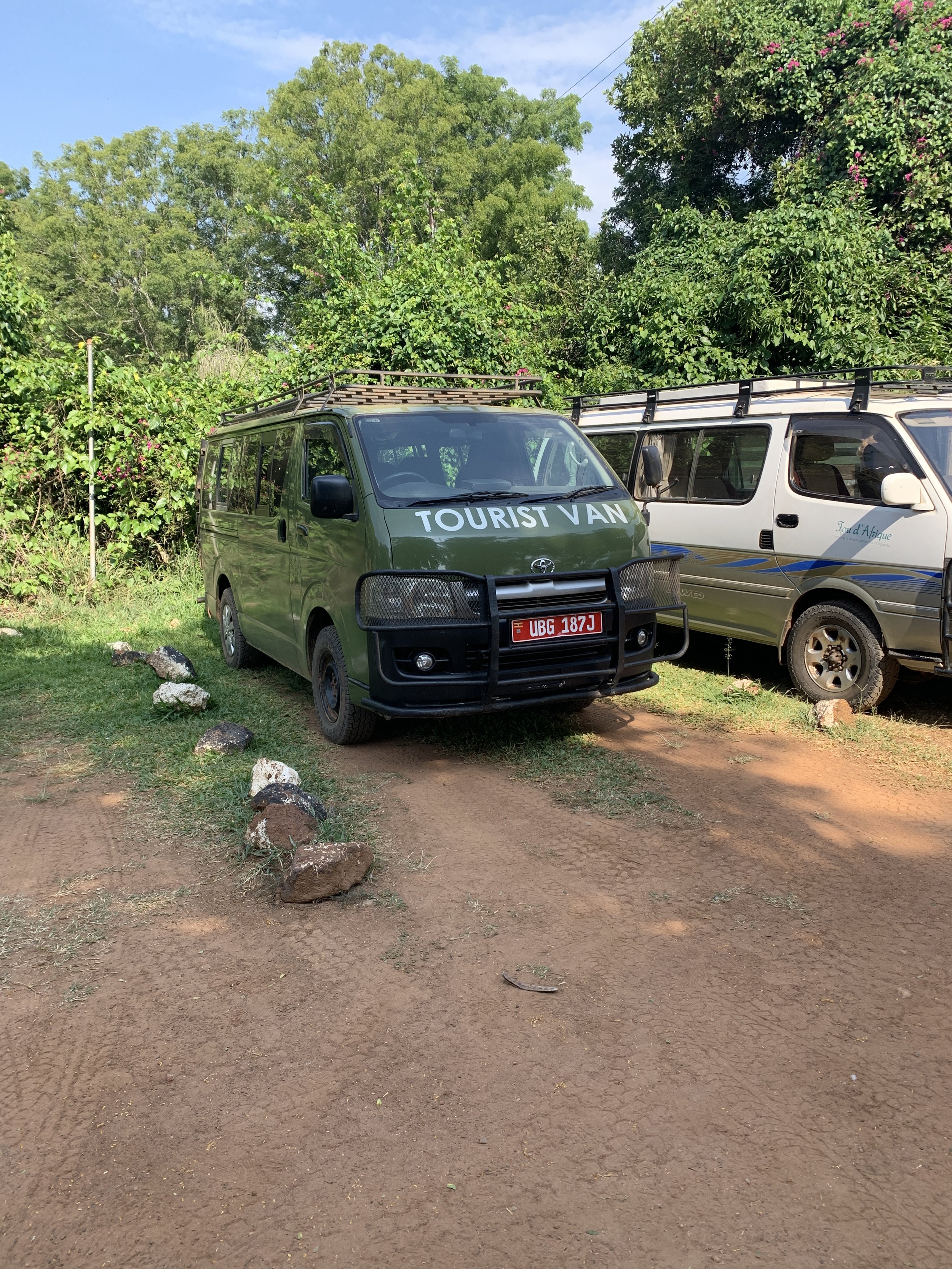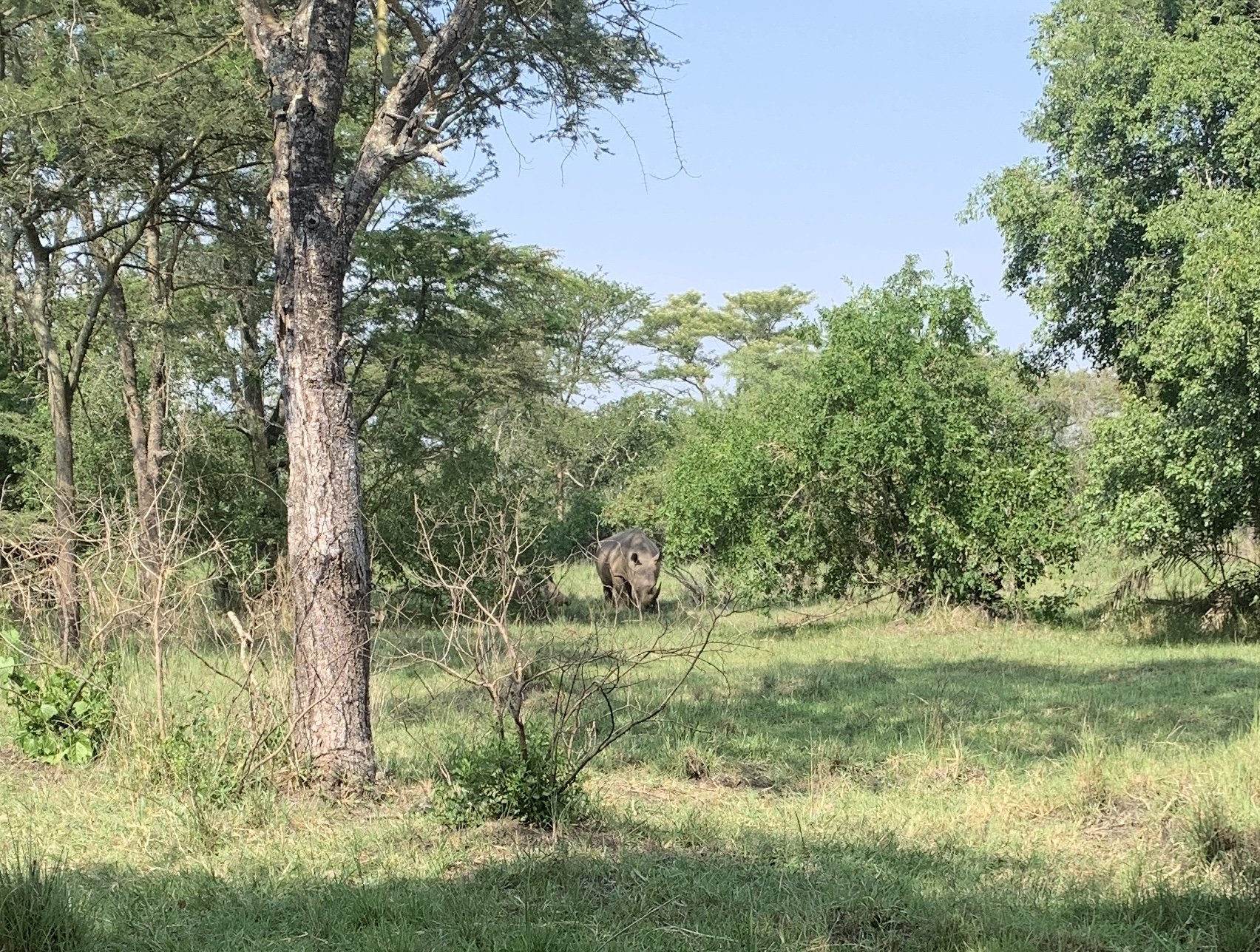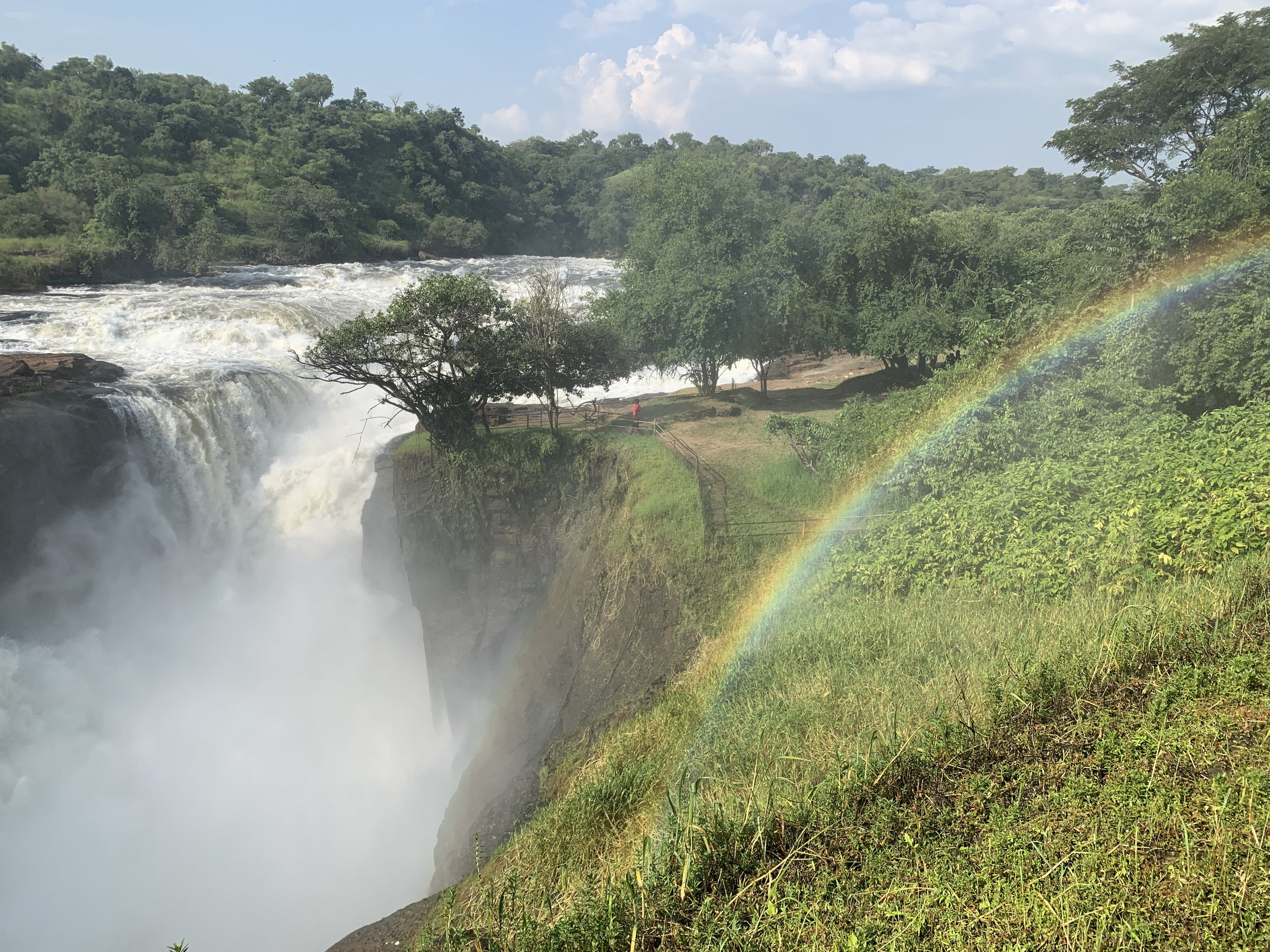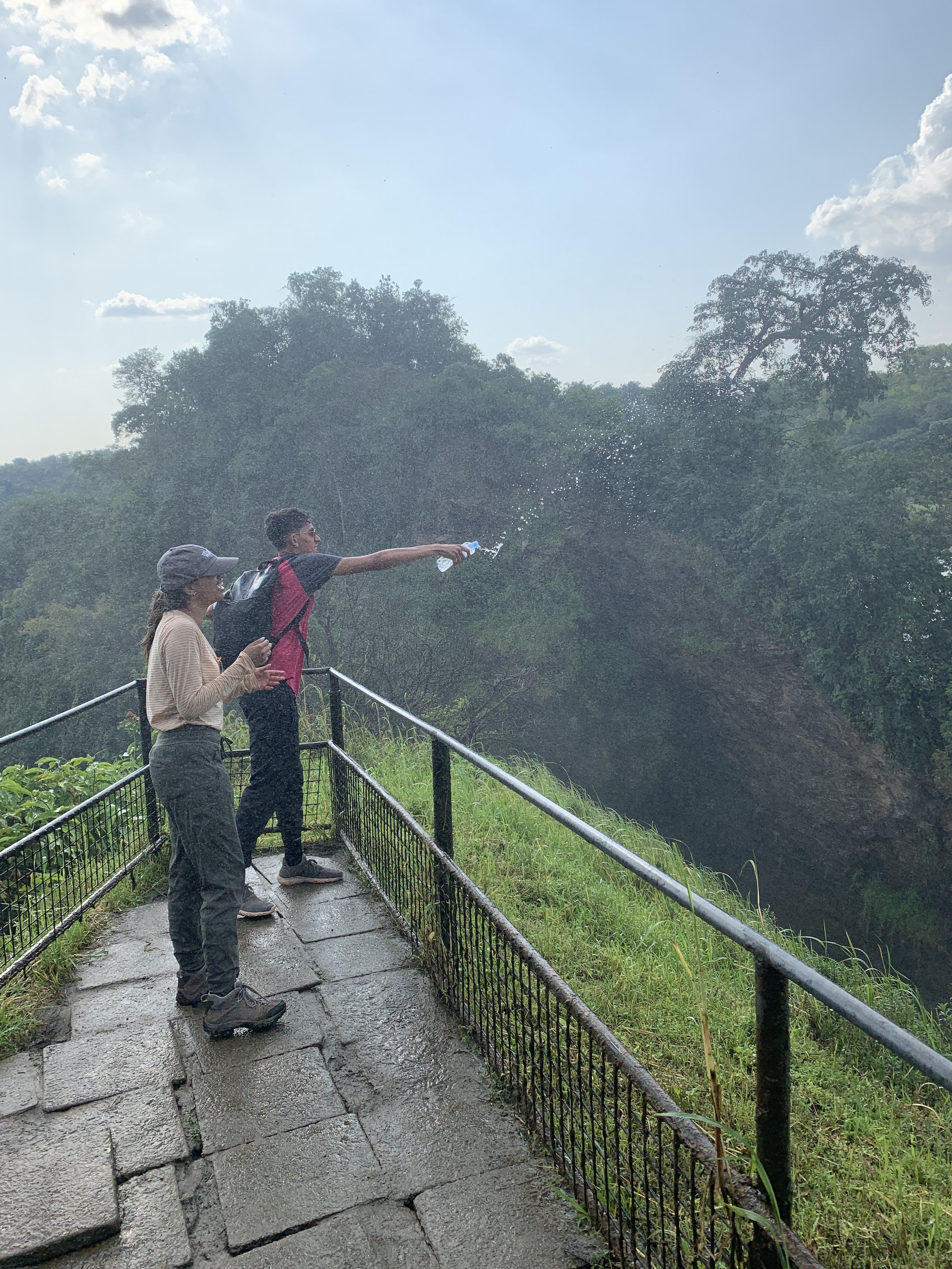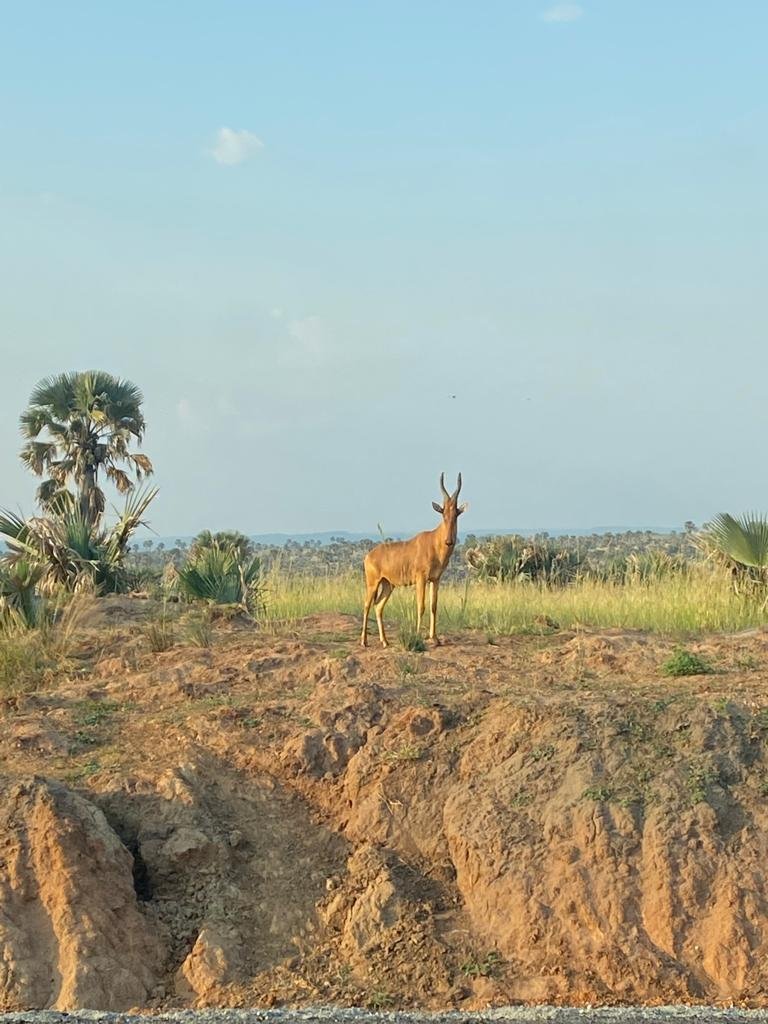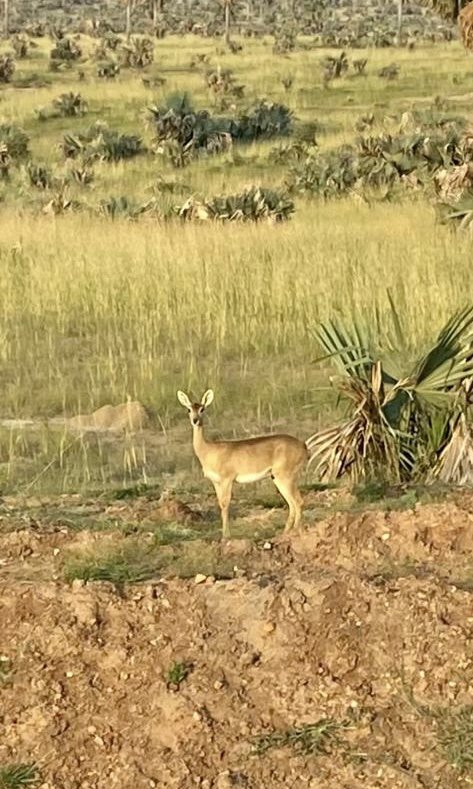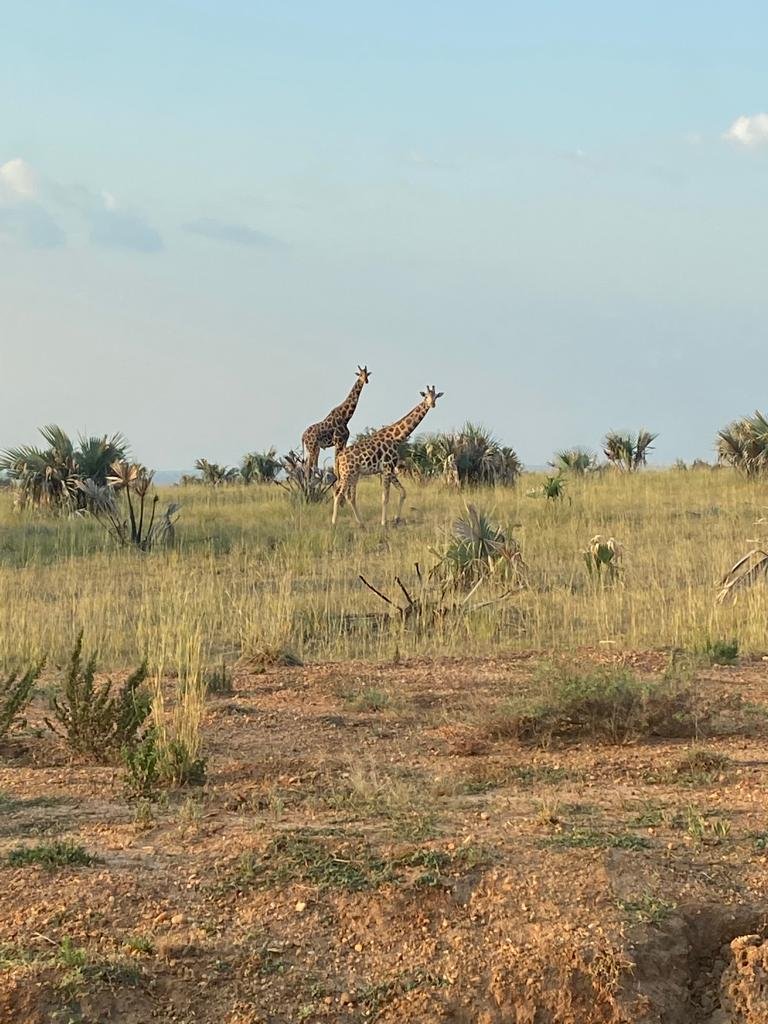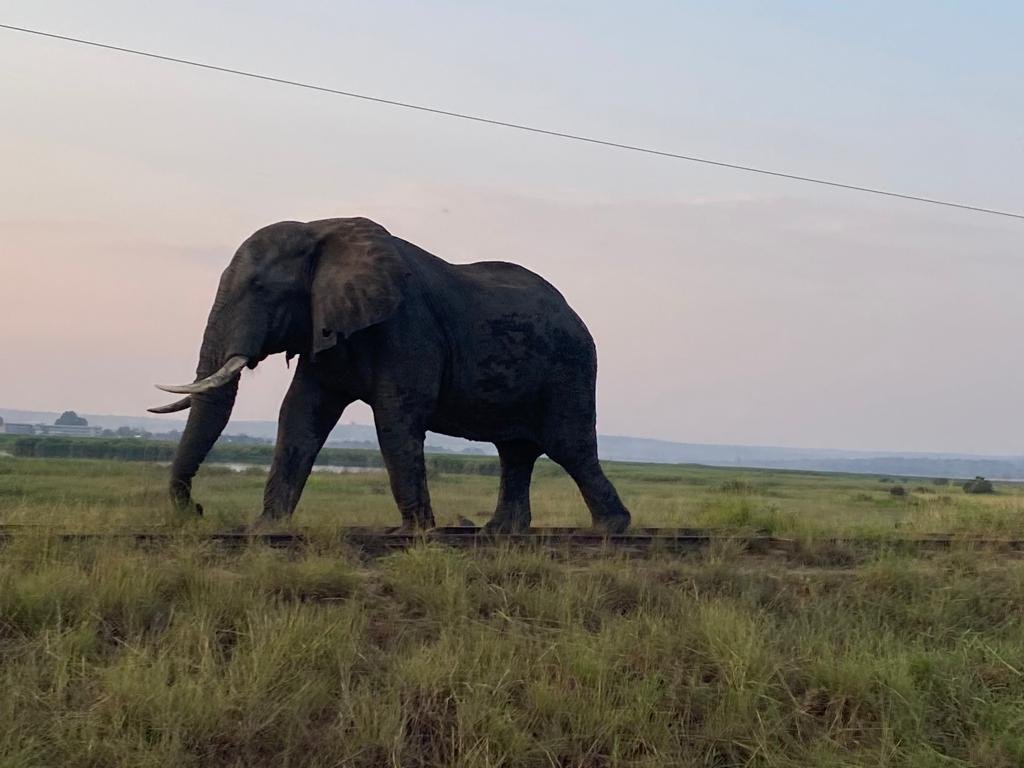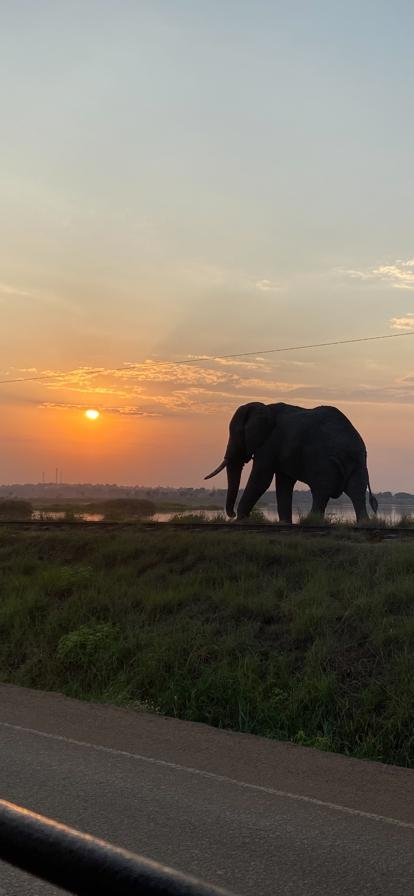Fellows Blog: Day 37
Today we woke up well before the roosters but still as the dogs were out and barking. This morning consisted of last minute packing, realizing the gate was still locked and we didn’t have the key, and making sure Devir showed up at 5 am (ish). But we made it out the door by 5:30am and were excited to be on our way to Murchison Falls!
We drifted in and out of sleep in the car, but mainly out of sleep given that we took backroads to avoid Kampala- this resulted in over an hour of extreme bumpiness. But all was well, and we got to the Ziwa Rhino Sanctuary.
In Uganda, all rhinos were poached to extinction by 1985 due to their horns being used for medicinal purposes in China. We learned that currently, the sentence for poaching rhinos in Uganda is lifetime imprisonment- a fine wouldn’t be enough of a penalty since it’s mainly wealthy people who do the poaching. In 2000, this sanctuary got 4 rhinos from Kenya and 2 from the United States. A male from Kenya mated with a female from the US to create the first offspring in this rhino lineage; they named this rhino “Obama” because of the similarities in their parents’ origins. Since then, they’ve bred many more rhinos and are now up to 33. The goal is to get to 50 rhinos, then relocate 15 -20 of them to a national park sanctuary and slowly reintroduce them into other parks again. Did you know that rhinos start reproducing around 4 years old and have a gestation period of 16 months? Moreover, they don’t give birth again until their first baby is about 2 years old, which is why it takes a bit of time to get to 50 rhinos.
Upon arriving at the sanctuary, we were given a safety debrief (but not asked to sign any waivers even though we would be right next to wild animals!) and the brief history of rhinos that are described above. Interestingly, we had to turn our phones on silent and turn off our location services before we set off driving into the 16,000 acre sanctuary. Within one minute of getting out of the van, we saw a mother rhino with her baby. The mother’s name was Bella and she was 21, and the baby was almost 2, the age where he will leave his mother. Bella has had six kids, and actually mated with one of her kids, meaning the father of the baby rhino we saw was also his brother… we were also confused. Anyways, despite Kyrillos wanting to be a rhino ranger, Amber earned the title first by being able to “smell” the second rhino before we saw it. We though she was kidding, only to run into another pair of mother and son rhinos about two minutes later!
All in all, we drove and walked though 15-30 acres of the enormous sanctuary. During the trip, we learned that rhinos can run at 35 kilometers per hour (21.7 mph), and that if one came charging at us, the best thing to do was hide behind a bush. Our guide admitted he had gotten attacked by some before (one of the supposed “gentle” ones had dislocated his shoulder), but he assured us most of them were docile. We were very impressed that our guide could recognize each of the 33 rhinos without any hesitation, because they all looked identical to us. He could also tell whether a rhino was alpha/dominant rhino based on the dung it produced, which was a fun fact to learn as we were standing in the rhino dung watching the guide examine it with his bare hands. We also learned that rhinos don’t regurgitate and rechew their food (like cows do) because there were grass pieces still in their dung. Additionally, rhinos choose specific places to defecate every time because they don’t want to contaminate the grass that they’re eating. We were thrilled to hear that the concept of having a bathroom exists in other species!
All of the rhinos in the sanctuary are wide mouth rhinos, which are called white rhinos due to a language misunderstanding. A Dutch man said “wide rhinos,” but because of his accent, an English man interpreted it as “white rhinos”, hence these rhinos are white rhinos and the other species of rhinos are black rhinos. That said, though, both species are actually a dark grey color. We learned that kangaroos were also named in a similar fashion- someone asked the name of an unknown animal, and another responded with “kangaroo,” which actually translated to “I don’t know” in their respective language.
We ate lunch at the sanctuary, which was pretty decent except for Kyrillos discovering the inside of his chicken was raw after eating half of it. He requested a new, cooked chicken from the staff, only for them to bring back his half eaten chicken they had recooked. Despite trying to argue why that wasn’t an acceptable way to cook chicken, the restaurant wouldn’t give us any discount on the meal. They did try to give us some complimentary watermelon at the end though!
We then drove an hour and a half to the entrance of Murchison Falls, a 1513.9 square mile (982,985.2 acre) national park. While our guide showed our passports to the park staff (we found it interesting we needed our passports to get into both the rhino sanctuary and the park), we browsed the gift shop.
We headed to the top of the falls, which turned out to be much larger than any of us expected. The main waterfall, Murchison falls, is the most powerful waterfall in the world. There was also a smaller waterfall next to it called Uhuru, which means freedom in Swahili- it’s meant to represent Uganda earning their independence. We will post videos of the falls and the rest of our adventures once we know we can buy more wifi/data back in Mukono. We spent a while at the falls and none of us wanted to leave as it was very calming and refreshing.
We then went on a mini “game drive,” meaning we got to see a bunch of animals before our official game drive tomorrow. Our van roof pushes open so we can stand out the top and see everything much clearer! See the pictures for some of our sightings.
It took a while to get to our accommodations, but we didn’t mind all the stops along the way to see different animals. Upon arrival, we were greeted with fresh tamarind juice before being brought to our living areas. Haleigh and Amber are sharing a room, and Kyrillos and Devir are sharing another. We’re a little concerned about mosquitos in our African round hut, but we were happy once we found an outlet and realized that the cold showers were actually refreshing in the heat.
We had a dinner of mushroom soup, fried fish (or fried beef in Kyrillos’ case), and some sort of cake that tasted a lot like cornbread before settling down in our rooms to write the blog. Turns out the power turns off at 10:30 pm, but thankfully our phones are pretty much charged. We have to be ready to go by 6:15 am tomorrow in order to see the animals, so no sleeping in for us!
A scene from our morning drive, taken at 6:20 am
Uganda’s National bird is the crested crane, a very pretty bird that is also on their flag
Our rather prominent van
“This is how tourists get robbed” -Kyrillos
We couldn’t get too close to the rhinos for the threat of getting trampled but still pretty cool we thought!
All this effort for a rhino picture and we still used Haleigh’s picture in the blog
The only picture where Amber is taller than Haleigh
They have a whole wall of family history and name meanings at Ziwa Rhino Sanctuary. We particularly liked the one named Whitaker (@washu)
Murchison falls!! Kyrillos didn’t run away from us this time!
When we got to the very top, we saw a rainbow!
“I want to contribute some water to the Nile” -Kyrillos, on his third attempt to get the water from his water bottle into the waterfall.
One of many baboons we saw today, or as Kyrillos accidentally called them, “bamboos.” Did you know they have “multicolored rears?” For more details, please reach out to Amber or Rick Riordan.
A type of antelope!
Another type of antelope (there are too many! we forgot what they’re all named, sorry!)
A water buffalo! Did you know that water buffalos are usually found in herds of 100-200, but when they’re found alone or in much smaller groups, they’re considered “losers”? This means they lost a fight, were kicked out of their herd, and are now easier for predators to eat. These water buffalos usually tend to be on the older side.
We had some staring contests with giraffes today. Haleigh was ecstatic to see her favorite animal!
The elephants came up and walked right next to us
#Amberisregainingphotographyskills
We saw some hippos in the distance- did you know hippos are considered the number one animal killer of humans, followed by crocodiles and buffalo, oh my!
Our quaint abode :) we are thankful there are mosquito nets.
A nice sunset view from outside our room!



